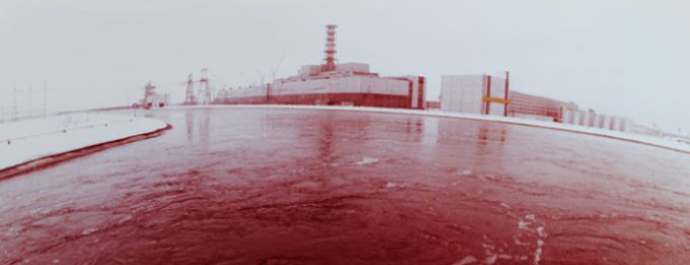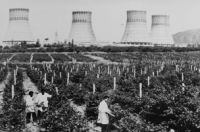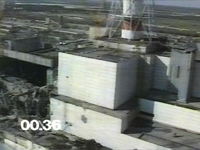Ecological Disasters
Economics

Concern for the environment grew in Eastern Europe and the USSR in the 1980s, as a result of both Perestroika and the Chernobyl nuclear disaster (1986). From the very start of the October Revolution, in 1917, one of Bolshevik ideology heralded an industrialist civilization that would master nature. Under Stalin and his successors, the preferred model was a planned economy, financed by intensive, collectivized agriculture and dependent on industrialization through gigantic Kombinat (combines), mono-industrial cities, huge civil-engineering projects (dams, canals, diverting rivers) and the power of the military-industrial complex. This model was supposed to preserve the environment, unlike Capitalist economy, which was portrayed as destructive to nature. In reality, the environmental costs – long censured by the authorities – constitute a catastrophic heritage that has proved hard to overcome. Severe pollution of the air, water, soil and sub-soil due to uncontrolled discharge of industrial waste; infiltration and chemical pollution caused by agriculture; nuclear contamination in Siberia and Chernobyl; depletion and erosion of the soil; depletion of rivers; deforestation, and pollution of the seas by both industry and the military. This disastrous outcome has had serious consequences for health: high infant mortality, elevated rates of cancer and respiratory illnesses, cerebral and physical malformations.
Archive
Pollution of Lake Baikal
The largest fresh- water reservoir in the world, Lake Baikal was polluted form 1996 to 2008 by the industrial wastes of the Baikalsk cellulose and paper combine.
country: Soviet Union / year:

The largest fresh- water reservoir in the world, Lake Baikal was polluted from 1996 to 2008 by the industrial wastes of the Baikalsk cellulose and paper combine. Water pollution caused by industry (discharge of waste water, chemical products, metals) and agriculture (insecticides, pesticides), as well as untreated urban sewage, a common phenomenon in the countries of the Communist bloc, also affected Lake Lagoda in the USSR, the Baltic and Black Seas, and rivers like the Ob, the Volga and the Don (USSR), the Vistula and the Oder (Poland), the Elbe (GDR) and the Danube, Eastern Europe’s great international waterway.
Checking radiation levels at the Metzamor nuclear power plant in Armenia
Built in the 1970s in an active seismic zone, Metzamor was closed down in 1988 (after an earthquake) and put back into service in March 1995.
country: Soviet Union / year:

Built in the 1970s in an active seismic zone, Metzamor was closed down in 1988 (after an earthquake) and put back into service in March 1995. The 66 VVER and RBMK (Chernobyl) Soviet reactors, built in Eastern Europe and the ex-USSR, pose serious safety issues (including no automatic shut-down in case of earthquake, aging and design problems in the cooling and command systems), particularly the plants in Kola (which came close to blowing up during a severe storm in 1993), Leningrad, and Lithuania (RBMK). The international community has helped improve their security.
Awakening the ecological consciousness
“Soviet citizens have to preserve nature and protect its riches”
country: Soviet Union / year:

“Soviet citizens have to preserve nature and protect its riches” The absence of independent public opinion in the Eastern-bloc countries prevented ecological consciousness from emerging. Official propaganda, which covered up the catastrophes, focused on poster campaigns and national parks, first created in Poland in the 1950s and the USSR in the 80s. By the late 70s, the first informal ecological movements came into being, in Poland for example. In the USSR, Perestroika and Chernobyl led to a certain consciousness raising as well as the founding of the first “Green” parties and movements in late 1989-early 1990 in Estonia and Lithuania, and shortly thereafter in Ukraine and Moldavia.
The Chernobyl Liquidators
Both military personnel and civilians from across the USSR were involved in the Chernobyl clean up
country: Soviet Union / year:

Both military personnel and civilians from across the USSR were involved in the Chernobyl clean up. They intervened directly on the Chernobyl site (to rein in the catastrophe, clear the radioactive wreckage, and build a sarcophagus, as well as those who continued cleaning up the site into the 1990s) without knowing the risks or being efficiently protected. Altogether, some 600,000 people were involved in the clean-up. The highly debated human costs range from 47 casualties (according to the UN) to nearly 60,000 deaths plus 165,000 people left handicapped (according to ONGs and other groups). The authorities had called upon their dedication, and had promised high salaries, medals and social benefits.
The Pripyat evacuation
The 45,000 severely irradiated inhabitants of the city of Pripyat (2 miles/3 km from the Chernobyl plant), were evacuated by the Army 30 hours after the catastrophe
country: Soviet Union / year:

The 45,000 severely irradiated inhabitants of the city of Pripyat (2 miles/3 km from the Chernobyl plant), were evacuated by the Army 30 hours after the catastrophe, which they were not aware of. They were precariously resettled in the contaminated regions of Polesskoya, then in a newer city, Slavutych. From May to August, more than 100,000 people living within a radius of 20 miles/30 km around the plant were evacuated, and given a lump sum compensation of 4,000 rubles per adult and 1,500 per child. Altogether, 250,000 people were evacuated. Pripyat is now a ghost town, in a highly radioactive zone.
Cotton production in Uzbekistan
In the early 1960s, Soviet authorities diverted the Amour-Daria and Syr-Daria Rivers
country: Soviet Union / year:

In the early 1960s, Soviet authorities diverted the Amour-Daria and Syr-Daria Rivers, which fed into the Sea of Aral, in order to develop intensive, irrigation-dependent cotton farming in the Kazakhstani and Uzbek Deserts. Dwindling from 26,300 sq. mi./68,000 sq. km in 1960 to 6,500 sq. mi./17,000 sq. km. in 2005, the sea soon turned into a salty desert. The high salinity killed off all the animal and plant species living there and ruined the nearby fishing ports. The high levels of emerging pesticides and insecticides caused a marked increase in both infantile mortality and cancer rates.